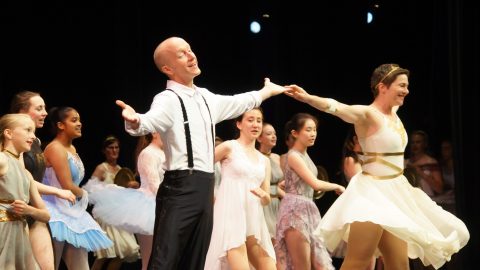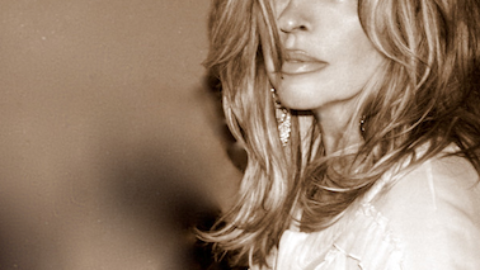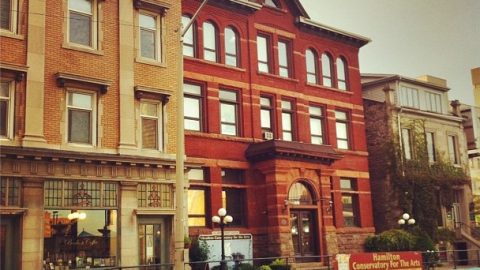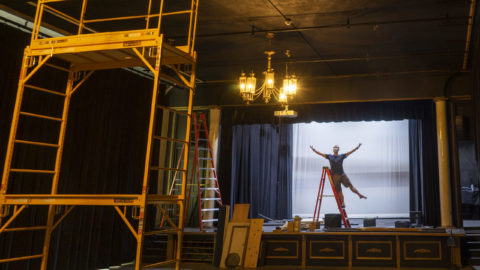You get used to them: the computer algorithms that run your life. From the code that curates your morning tweets to the digital thermostat on the wall, there’s a script lurking in every corner these days. Code: it’s the water you swim in, and the air you breathe. It shapes you.
Sometimes you do wonder: “have the robots taken over?” It’s worrisome, of course, but you’re also creative enough to thrive in code-land. You have a cultivated human imagination (brighter than any robot). You possess a generous curiosity, and you’re eager to stretch your mind. Are you ready to befriend these spiralling machines?
In any friendship, it helps to speak the same language. Algorithms are no exception. My smartphone has learned to speak English, but I have also learned some JavaScript. Perhaps it is a meeting in the middle: a kind of artistic collaboration. Code comes to me with a structure and a logic, and I come to code with vigor and vision. Whether we are building tools and websites (like hcarts.ca), or pursuing the imaginative and critical flights of artistic practice, I do find that it’s a symbiosis.
Being in tune with code has also made me more aware of my “inner algorithms”: those encoded into my DNA. Intricate processes are carried out by genetic code: instructions for how to build a pumping muscle, a heart, a vital mind, or a body.
Biology can be complex, but there are also simpler forms in nature: like the spiral of a snail or mollusk shell. The spiral construction follows a basic rule: each curved segment is slightly larger than the one before. The spiral algorithm is a process of growth. That’s how the mollusk builds a home: layer upon layer of raw materials: a calcium carbonate shelter.
As a digital artist, my “raw materials” are rather immaterial. They are pixels recorded by a camera. Pixels are so tiny and fragile. They live on memory cards and hard drives, and increasingly, they inhabit that mysterious place we call “The Cloud”. I like to think of pixels as raindrops: almost invisible on their own, but together, creating rainbows. The sky is a code artist, shaping clouds with the algorithms of the atmosphere. Up here, the Coriolis Effect ensures that the spiral recurs: perhaps gently, or maybe in the shape of a hurricane.
Whenever I look up at the sky, I see patterns. And wherever I see patterns, I know there is some underlying action: hidden processes and logic whereby those patterns emerge. Behind every raincloud is a sky-script: evaporation and condensation and precipitation. And for every footprint in the sand, I find the hopping, or skipping or dancing logic of feet.
What patterns do you see around you? How did they get there? What is the underlying code? How will you make patterns of your own?

What We Need, Harold Sikkema, 2017
“They are a shelter for the imagination.”
In my exhibit, Cloud Storage, I have made a spiral algorithm, to roll up the sky like a yoga mat. It’s a little bit of code that I borrowed from the mollusk: each successive segment is slightly larger than the one before. And so it builds, layer upon layer. Like the snail shell, these sky spirals also serve as a kind of home. They are a shelter for the imagination. They enable me to envision how the world might be different. They draw attention to the colours and gradients of the air. They heighten my sense of wellbeing and awareness.
The time to be aware is now: the geological age that scientists call the “anthropocene”. A time characterised by human impact, not only on the environment, but on the planet itself. As a species we have enacted many vast shifts and upheavals. We have built algorithms to shape our world. Socially, technologically, geologically, and climactically, our creative powers have begun to alter the fabric of the earth and the sky. Do we really know what we are doing? Do we really grasp the power that we wield?
There’s a serious edge to my effort in Cloud Storage. It’s a reminder about how trivial it has become to mess with the edges of existence: how easy it now is to fundamentally alter the deep patterns that affect our shared life.
You and I are tasked with building the algorithms of tomorrow, and the future is counting on us to build them well. When I think about this, I am disheartened by the way that powerful people have shaped the world’s algorithms for narrow goals, like profit. But when I see young people discovering the language of code as their own, I know that there is also hope.
The playful whimsy of the spiral reminds me that creativity is a way forward. And so, it continues to be worthwhile to learn, and to grow, and to take responsibility for the tools, technologies, and culture we create.
I hope you enjoy the sky spirals in Cloud Storage. I also hope you will bring along your curious questions about the patterns and the processes. My free exhibition opening is on Sunday February 11th, at 4pm. I’ll also be doing a “Creative Coding” workshop during HCA’s Family Day. You’re invited, of course. Bring your own images on a smartphone, or USB stick, and we will explore together how to make spirals of all kinds!











[…] November 30th 2017, I ran a workshop with high school students from HWDSB. Hosted by the Hamilton Conservatory for the Arts, the workshop addressed specific digital media skills that students were learning in the context of […]
[…] November 30th 2017, I ran a workshop with high school students from HWDSB. Hosted by the Hamilton Conservatory for the Arts, the workshop addressed specific digital media skills that students were learning in the context of […]